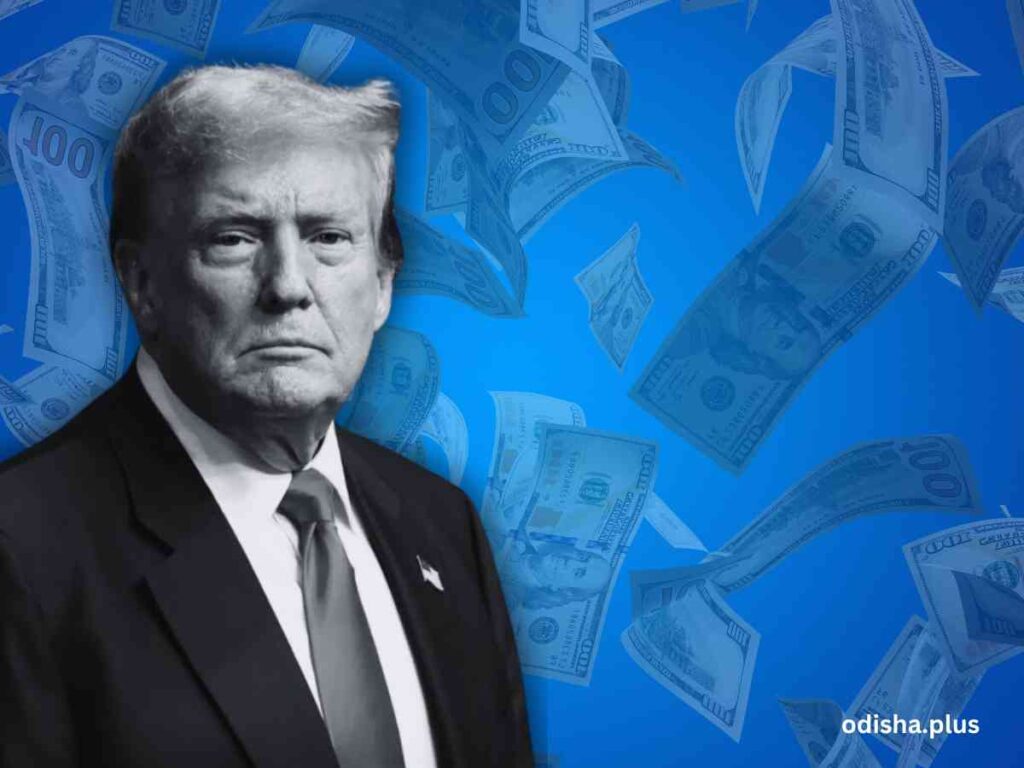Amid rising protectionism fueled by Trump’s tariff policies, India faces critical decisions on balancing retaliation and strategic economic resilience
Prof Satya Narayan Misra

Global Economic crises have a way of leaving behind many lessons that have often been followed up later. And sometimes ignored. The fiscal stimulus by FDR to resuscitate the US economy from the quagmire of depression in the 1930s was replicated by almost every country when the pandemic hit the world. Or the East Asian crisis of 1997 due to the unregulated flow of capital has made many developing economies like India weary of embracing full convertibility of their currency. The Subprime Crisis of 2007-2009, which busted the myth that Big Banks Do Not Fail, has made countries more cognizant of the importance of regulating the banks properly.
But how does one deal with the tariff tantrums of Trump? Retaliate the USA with high tariffs like China, or demurely wait and watch like India? A man-made crisis seems to have befuddled the best of analysts.
This brings to memory the ‘beggar thy neighbor’s policy’ adopted by many countries during WWII, when the fixed exchange system under the iconic Gold Standard crumbled. Countries started imposing import tariffs, introduced import quotas, and resorted to competitive currency devaluation to boost domestic economies, regardless of their impact on trading partners.
Free Trade
The sanity came to countries when the War ended and the Bretten Woods agreement established the IMF in 1944 resuscitated the gold standard system, reinforced the fixed exchange rate system, and made the Dollar the premier global currency. The GATT came in 1948 to progressively reduce and eventually eliminate trade barriers to promote free trade. An iconic idea espoused by David Ricardo. This led to the repeal of the Corn Law in 1846.
The country that has been at the forefront of building international institutions to usher in global economic stability and encourage free trade was the USA, the real victor of WWII. The foundations of these institutions are being shaken by a President who wants to make America Great Again by building a tariff around itself.
Joseph Nye, who popularized the concept of soft power, observes, “He is so obsessed with the problem of free riders that he forgets that it has been America’s interest to ride the bus.” It was George Santayana who had said in 1905: Those who cannot remember the past are condemned to repeat it.
The global crises that followed have interesting trajectories and often brought out systemic improvements in the governance structure in the years ahead. The economic depression in the USA in the 1930s showed the fallacy of automatic equilibrium as espoused by the classical economists. Keynes rightly flagged the importance of generating additional employment through public investment to boost effective demand. FDR gave life to these groundbreaking ideas by bringing the New Deal Program of massive public investment, coupled with a slew of social securities to truly make USA inclusive country.
Welfare State
Despite the shrill advocacy of market fundamentalism by Hayek and Freidman, FDR’s grand construct of a welfare state has stood the test of time. History repeated itself when the pandemic struck in 2019, and all countries found the voice of Keynes most salient. The generous fiscal stimulus by all countries, apart from rapid vaccination, revived business and curtailed unemployment.
The collateral-free loans to SMEs by the Indian government and the increase in allocation to marquee employment generation programs like MNREGA have ensured that India comes out of the grip of the pandemic fairly quickly and the most vulnerable are on the path to recovery.
The Subprime crisis of 2007-2008 in the USA and its contagious impact on other countries clearly showed that the crisis was caused by widespread failures in financial regulation, including the Federal Reserve’s failure to stem the tide of toxic mortgages and dramatic breakdowns in corporate governance.
Raghu Ram Rajan in his book ‘The Fault Lines,’ emphasizes the importance of effective risk management and the need for better regulation and oversight. The crisis led to a slew of reforms in the international banking architecture. The BASEL III (2010) has ensured that the banks have raised their capital adequacy levels, improved risk management practices, and promoted financial stability.
The Frank Dodd Act (2010) has called for improving accountability and transparency in the financial system, protecting consumers from abusive financial practices, and preventing future financial crises. Most of these measures have made our banking systems more regulated.
Modi’s Deregulation
One of the ongoing initiatives by Mr. Modi of late in India is the need for deregulation. There is a sense that many of the sectors are overregulated, holding up growth. Two recent books, one by the Nobel Laureate Stiglitz, ‘Road to Freedom’ and Ruchir Sharma, the investment analyst’s ‘What Went Wrong with Capitalism’ reach diametrically different conclusions. Stiglitz believes that the idea of unregulated markets promoting growth and freedom is flawed. Stiglitz flags the importance of social welfare, equality, and government intervention to address market failures.
On the other hand, Ruchir believes that capitalism has been badly distorted by constant government intervention and the relentless spread of a bail-out culture. He offers a series of seven fixes to restore the balance between state support and free markets that will pave the path to a more prosperous future.
During the economic depression of the 30s, FDR brought in the Glass-Steagall Act of 1933, which essentially dissuaded the banks from undertaking risky investment functions. The Clinton administration replaced this Act with the Gram-Lech-Bliley Act of 1999, which removed this wall of the banking function.
Dystopian Situation
Nobel laureates like Paul Krugman believe that such dilution in regulation was one of the prime reasons for the failure of big banks, who were dabbling in dubious collaterals. India needs to be careful before jumping on the bandwagon of Elon Musk advocating deregulation and dismantling the sound control systems of the bureaucracy. India could navigate through the global financial crisis of 2007-2008 due to its sound banking regulatory structure. It also waded through the pandemic years skillfully because of its commitment to promoting the welfare of the most vulnerable sections of society.
The present dystopia unleashed by Trump can be faced better by India following the Chinese model of becoming a global manufacturing hub, investing more in quality education, skills & technology, thereby improving value addition.
(The writer is a Professor Emeritus, KiiT University, Bhubaneswar. Views expressed are personal.)

























